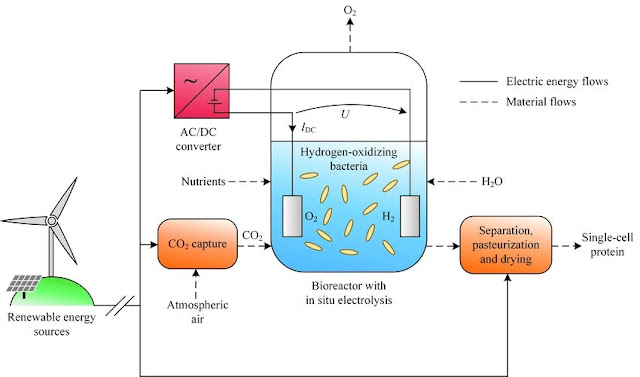In a new research, scientists have created a batch of single-cell protein using a system powered renewable energy. This single-cell protein is sufficient to serve for dinner to people.
The process to create a batch of single-cell protein requires four raw materials - electricity, water, carbon dioxide, and microbes.
Food From Electricity project, which is a coaction between Lappeenranta University of Technology (LUT) and the VTT Technical Research Centre of Finland is the project behind the creation of synthetic food.
The raw materials are first placed in a bioreactor for electrolysis that forms a powder that contains 50% of protein and 25% of carbohydrates.
Scientists say that they are currently optimising the process as the current bioreactor, which is of the size of a coffee cup makes 1g of protein in two weeks. The scientists are consolidating the process, technology and efficiency before the process is brought out commercially. Scientists have set a time frame of 10 years to bring out the process to the public.
This technology can be used to feed people who starve and catering food to people living in areas that are not suited for agriculture.
The device operates autonomously of environmental factors, implying that it could feed people consistently - Jero Ahola, a Professor at LUT, said in the press release that it "does not require a location with the conditions for agriculture, such as the right temperature, humidity or a certain soil type".
Second, as a means of decreasing global emissions by reducing the demand for food livestock and the crops necessary to feed them.
Meat industry accounts for 14 to 18% of global emission of green house gases. This can be reduced if an alternate healthy food like this can be replaced.


No comments:
Post a Comment